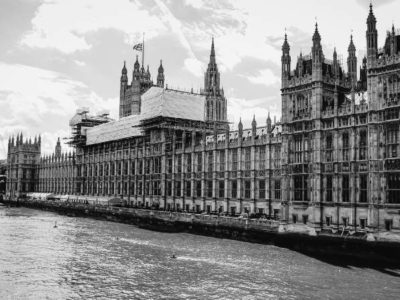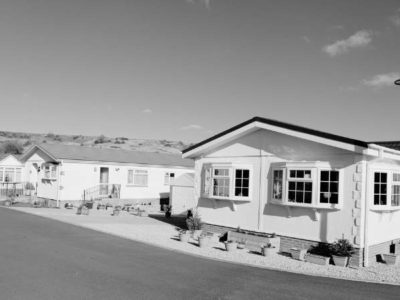Once you’ve invested in a property, there are a few things you’ll need to do in order to get it ready to let to your tenants. Even if you’ve chosen a great location with plenty of transport links and local amenities, you’ll need to make sure your property is well presented in order to attract the right kind of tenants for your asking price.
These small changes will also help you to avoid any hassle in the future from unnecessary maintenance requirements or dissatisfied tenants. Here’s our list of top tips for getting your investment property ready to let.
1. The long-term principle
Firstly, it’s important to have the mind-set that any changes or modifications you make to your property should last for a substantial amount of time. While a quick budget makeover might be cheaper, the cost and effort to go back in and make future changes could quickly add up.
This means you should prioritise long-lasting and durable fixtures that won’t easily break or wear down. For instance, light switches or cabinet handles are used daily and could very quickly require a replacement if they’re not solid in the first place. Opt for more hardwearing materials such as metal or solid wood if you can.
Also, have things like your boiler and heating system checked and serviced before your tenants move in. If these important things break down or cause issues after only a number of months, you could end up arranging numerous maintenance jobs that inconvenience your tenants. This could sour your relationship with them and potentially lead to void periods if they decide to move out.
2. Plan for your tenants
Depending on the type of property you own and your investment strategy, you will need to cater to different types of tenants. Are you renting to families that may have small children for instance? Or perhaps multiple working professionals who will share an HMO?
Figuring this out at the beginning will help inform your decisions when preparing your property. This could affect things like your choice of decorations and furnishings, as well as more significant decisions like whether you decide to convert the living room into an additional room. While students or young professionals may not mind not having any additional living space, this is likely to be a deal-breaker for a young family with kids.
3. Create a blank canvas
Remember, you’re not decorating your own home. If you want to cater to as many tenants as possible, create a blank canvas that can be easily adapted by anyone. This means no crazy wallpaper choices or quirky furniture.
Walls and ceilings should be white, nine times out of 10, and flooring should be neutral and consistent throughout. Also, remove any bulky items that might take up too much space, such as old chest of drawers or wardrobes. This is something you might do anyway if you are renting the place unfurnished, but if you’re letting your property with basic pieces of furniture like beds or tables, make sure these are simple and practical items.
If you can get away with leaving it un-furnished this might be more convenient, but it would be a shame to turn away a good tenant that plans to stay for the long term if you can’t provide a couple of basic household items.
4. Know your legal requirements
It’s always important to know the legal requirements involved in being a landlord. This includes things like getting a Gas Safety Certificate and an Energy Performance Certificate and making the necessary health and safety checks.
The government recently announced new safety measures to better protect private tenants, which involves five yearly mandatory electrical installation safety checks for all private rented properties. All this will need to be factored into the preparation of your property before you rent it out.
If you are letting through an agent, then they should be able to explain everything to you. But if not, it’s crucial to understand the various legal responsibilities that fall with you as the landlord.
5. Self-managing vs lettings agents
If you have multiple investment properties or if you live far away, you may well want to invest in a good agent to handle the running of your property. Otherwise, you may find self-managing your property advantageous. There’s no one right method here, but depending on what you choose, you’ll have to consider a few things.
A lettings agent will help you with things like drawing up contracts and other important documents, taking the deposit and conducting the inventory when your tenants move in. Essentially, much of the leg work will be handled by them, leaving you to simply check-in regularly with the agent to make sure everything is going smoothly (if they’re doing a good job that is).
You may require your lettings agents to handle things like upkeep and repairs, or you may want to handle this side of the business yourself. There are various services available with different rates and charges, so make sure you compare the options on the market before you make your decision.
If you decide to run the property entirely by yourself, then it’s all the more important to understand your requirements as a landlord and pay attention to what it takes to get your property ready for renting.
6. Final touches
Before your tenants actually move in, and to ensure you start off on the right foot, make sure you hire professionals to give your property a good deep clean. Not only is this courteous, but it also sets the right standard for how you want your property to be kept going forward.
Also, collect together any important documents, safety certificates or helpful information regarding recycling or rubbish pick-ups to hand over to your tenants when they move in. This kind of thing can save everyone time later down the line.
If the boiler stops working for example, it’s far cheaper if your tenants can simply pick up the instruction manual to make a quick fix rather than you hiring a contractor to make a visit.
It’s an investment after all
The profit you get form your property can be greatly affected by how well you make these preparations. If you don’t attract the right kind of tenants, you may end up having to rent at a lower price. The goal is to maximise the potential of your investment, and to do this, you’ll need to make sure it’s presented in the best light.

























Comments